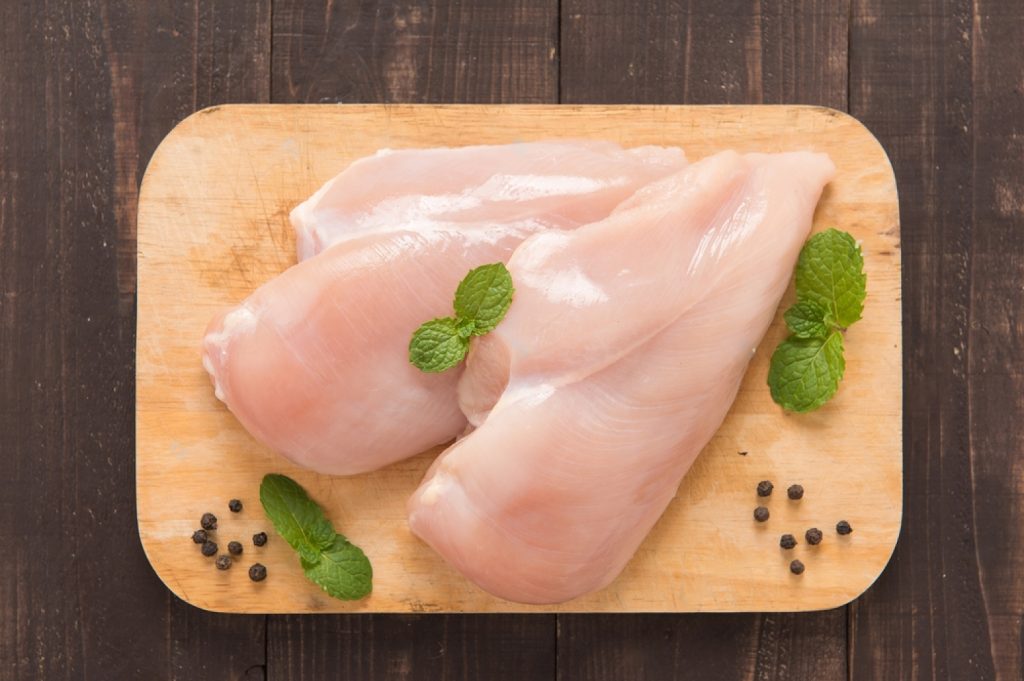Looking for the safest cutting board for chicken? The one that can bear the sharp cuts of your knives? This is it.
In this article, we’ll guide you through choosing the right material, features to consider, and proper cleaning and maintenance for your chicken cutting board.
By following these tips, you can ensure you’re serving others with confidence and peace of mind.
Let’s dive in and discover the perfect cutting board for your chicken preparation needs!
Key Takeaways
- Non-porous materials like high-density polyethylene or tempered glass are the safest options for a chicken cutting board.
- Look for a cutting board with a groove or well around the edges to catch juices and prevent cross-contamination.
- Choose a cutting board that is dishwasher-safe for easy cleaning and sanitization.
- Regularly clean and maintain your cutting board by using hot soapy water, sanitizing with water, vinegar, or hydrogen peroxide, and oiling with food-grade mineral oil to ensure durability and prevent bacterial growth.
Choosing the Right Material for Your Cutting Board
When choosing the right material for your cutting board, you’ll want to consider factors like durability and ease of cleaning. You want a cutting board that will last a long time and withstand the repetitive chopping and cutting of chicken.
Look for materials like plastic, wood, or bamboo; they are all excellent choices for a safe cutting surface. Plastic cutting boards are lightweight and dishwasher-safe, making them easy to clean and sanitize.
Wood cutting boards are sturdy and provide a natural, rustic appeal. Bamboo cutting boards are not only durable but also environmentally friendly.
Whichever material you choose, ensure it is non-porous and doesn’t absorb moisture, which can lead to bacterial growth. Keep your family and guests safe by investing in a high-quality cutting board that meets your needs and ensures the safest food preparation.
Features to Look for in a Safest Cutting Board for Chicken

To find the best option, consider the specific features you need in a cutting surface for preparing poultry.
When it comes to a chicken cutting board, a few key features can ensure the safety of both you and those you serve.
First, look for a board made of a non-porous material, such as high-density polyethylene or tempered glass. This will prevent bacteria from penetrating the surface and contaminating your food.
Additionally, choose a board with a groove or well around the edges to catch any juices that may run off while cutting. This will help minimize cross-contamination.
Lastly, opt for a dishwasher-safe board, making cleaning up a breeze and eliminating any lingering bacteria.
Considering these features, you can ensure a safe and sanitary-cutting surface for your chicken preparation.
Proper Cleaning and Maintenance for Your Cutting Board

Ensure you properly clean and maintain your cutting surface to ensure its longevity and prevent contamination.
Cleaning your cutting board after each use is essential to remove any bacteria or food particles that may be lingering. Use hot soapy water and a scrub brush to clean the board, especially grooves or crevices thoroughly.
After washing, sanitize the board with water, vinegar, or hydrogen peroxide, then rinse it well.
To maintain your cutting board, oil it regularly with food-grade mineral oil to prevent drying and cracking. Avoid using bleach or harsh chemicals, as they can damage the board.
By taking these steps, you’ll keep your cutting board in top condition and ensure the safety of the food you prepare for others.
That’s all from our guide to the safest cutting board for chicken.









Konnichiwa! (Hello!) I'm Pat Tokuyama, a Japanese tofu cookbook author, who travels for music, food, and adventure. If you like Japanese tea, checkout some of the newestorganic japanese tea, matcha bowls and noren and more!
** Curious about the Plant Based Japanese Cooking Club? ** Learn more here!